‘Keep an eye on Crimea’: Ukraine’s costly battlefield gains ‘prelude battle to retake peninsula’
‘When you see the Kerch Bridge being totally disabled, that will be the start of the battle to retake Crimea,’ the Ukrainian major tells Askold Krushelnycky in Kyiv
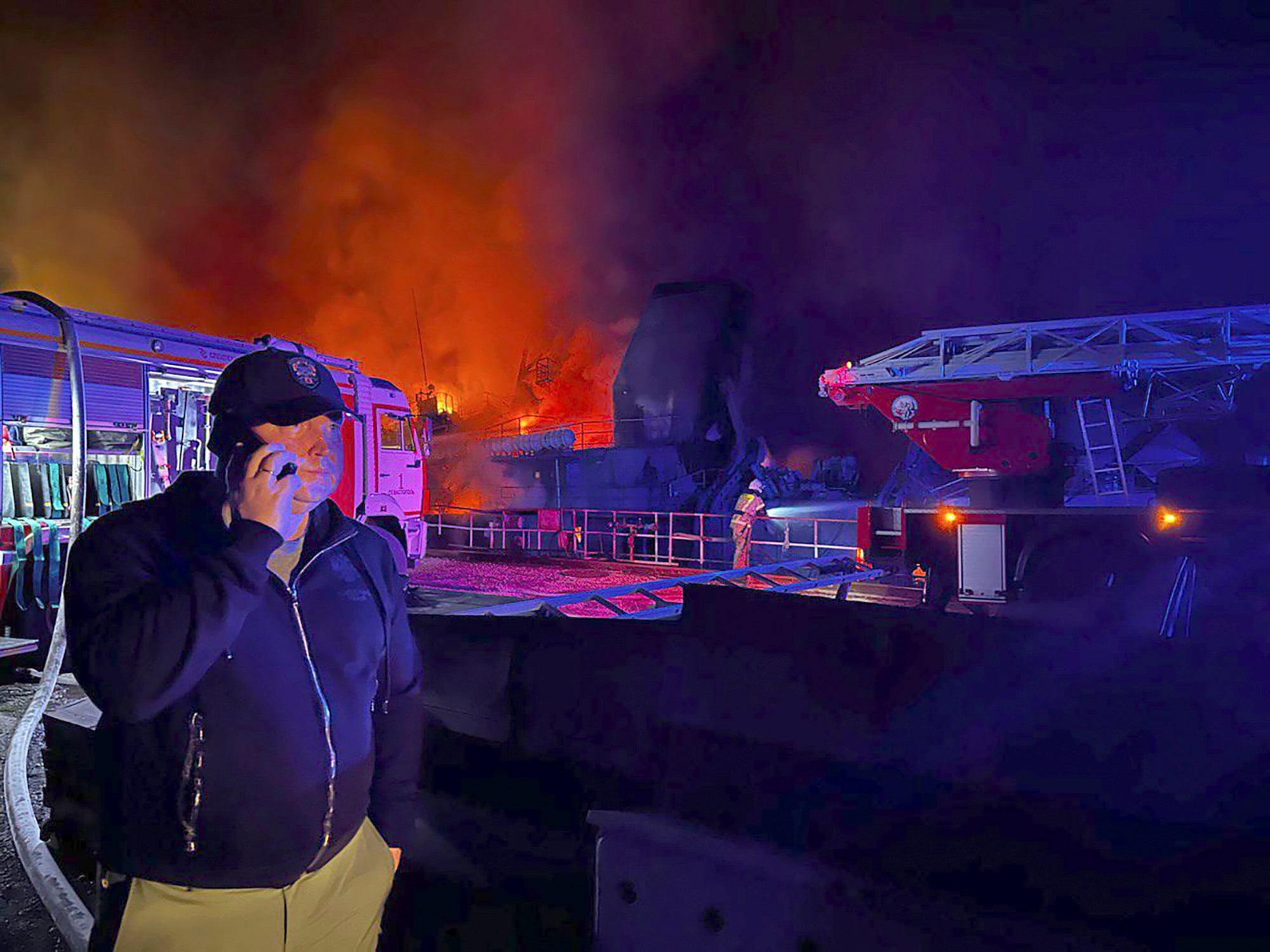
Ukrainian troops have this week pierced formidable Russian defences of concrete “dragon’s teeth” and mines in the southern Zaporizhzhia region, with Kyiv eager to play up the significance of the advances.
Some Ukrainian officials say the slow but steady gains made in the southern areas around Robotyne and Verbove are important developments in the eventual goal of the key road and rail route from Russia to Crimea, along the Azov coast.
But The Independent has spoken to military sources, including a senior officer involved in battlefield plans as well as officers and soldiers on the frontline, and some of them paint a less rosy picture.
While agreeing the counteroffensive is making gains, they told of large Ukrainian casualties and that the successes around Robotyne and Verbove have not resulted in a deep wedge into Russian forces, which are defending a triple layer of formidable defences.
However, there is an increasing amount of talk within Ukraine’s military, mostly privately, suggesting that Kyiv’s recent spectacular attacks on targets in Russian-occupied Crimea may be the prelude to a bold campaign to recapture the peninsula.
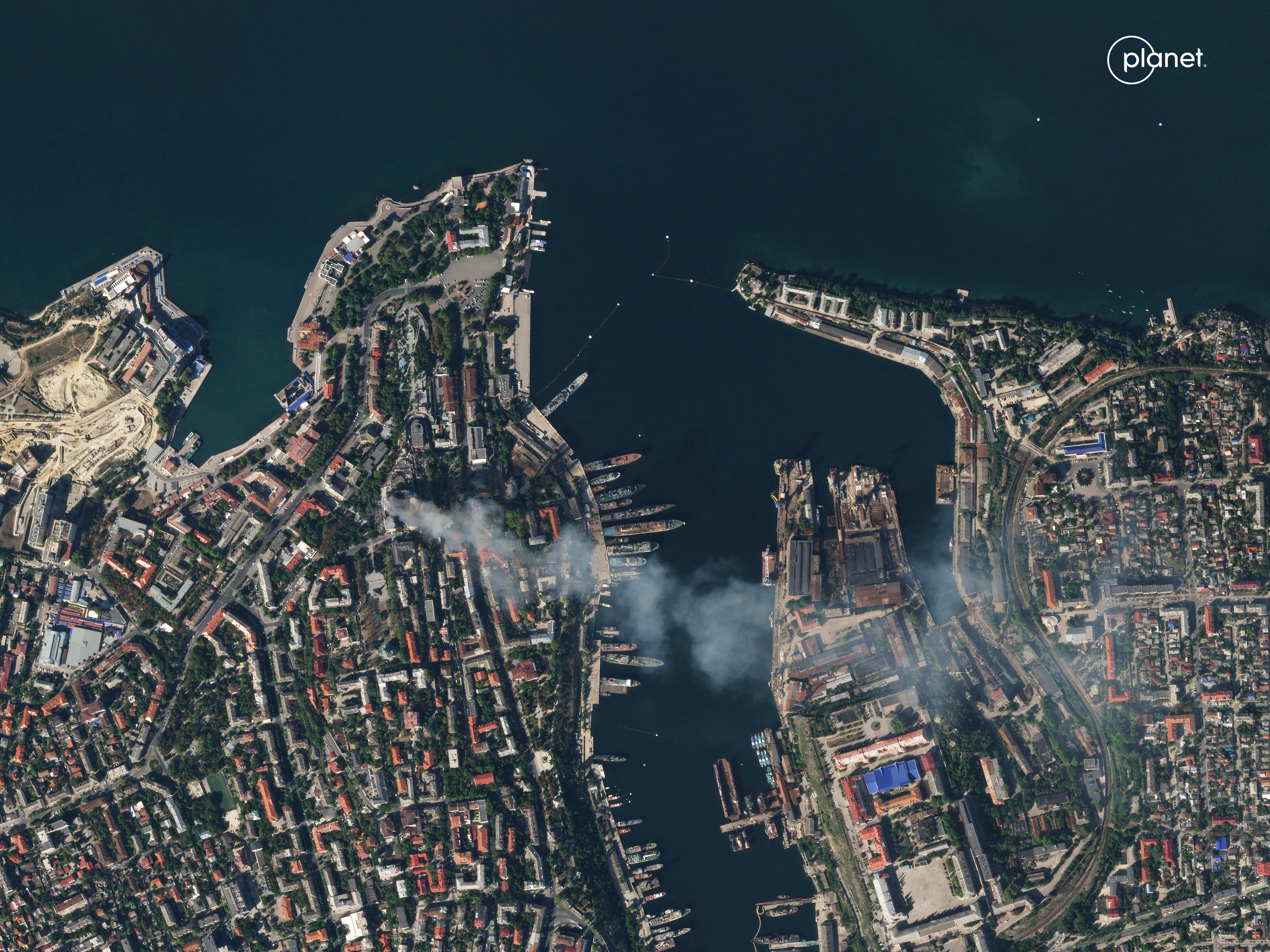
The biggest obstacle for Ukrainian troops has been swathes of land saturated with mines in front of the first Russian lines, which have made it almost impossible for armoured vehicles to move forward. In some areas, where the Russians calculated Ukrainian forces would have to pass, there are up to five mines per square metre.
Specialised mine-clearing armoured vehicles have also often proved unable to withstand them, so the task of clearing the area has been left to sappers working on foot. Many of those and thousands of other Ukrainian soldiers have been killed or maimed by the explosives.
An officer working in Ukraine’s general staff told The Independent that Ukrainian forces had indeed got through some sections of Russia’s first defence lines, comprising concrete dragon’s teeth anti-tank obstacles and complex trench and tunnel systems.
He acknowledged the skill of Moscow’s military engineers: “The Russians knew we were eventually going to attack to recapture occupied territory. But we had to wait for our allies to supply the weapons we needed to do that and the pause was too long.
“It gave them nine months to prepare very strong defences. It seems like they have copied the extended tunnel systems that the Vietnamese communist forces used when fighting the Americans. They are deep enough to withstand our shelling and enable them to disappear in one place and emerge in another.”
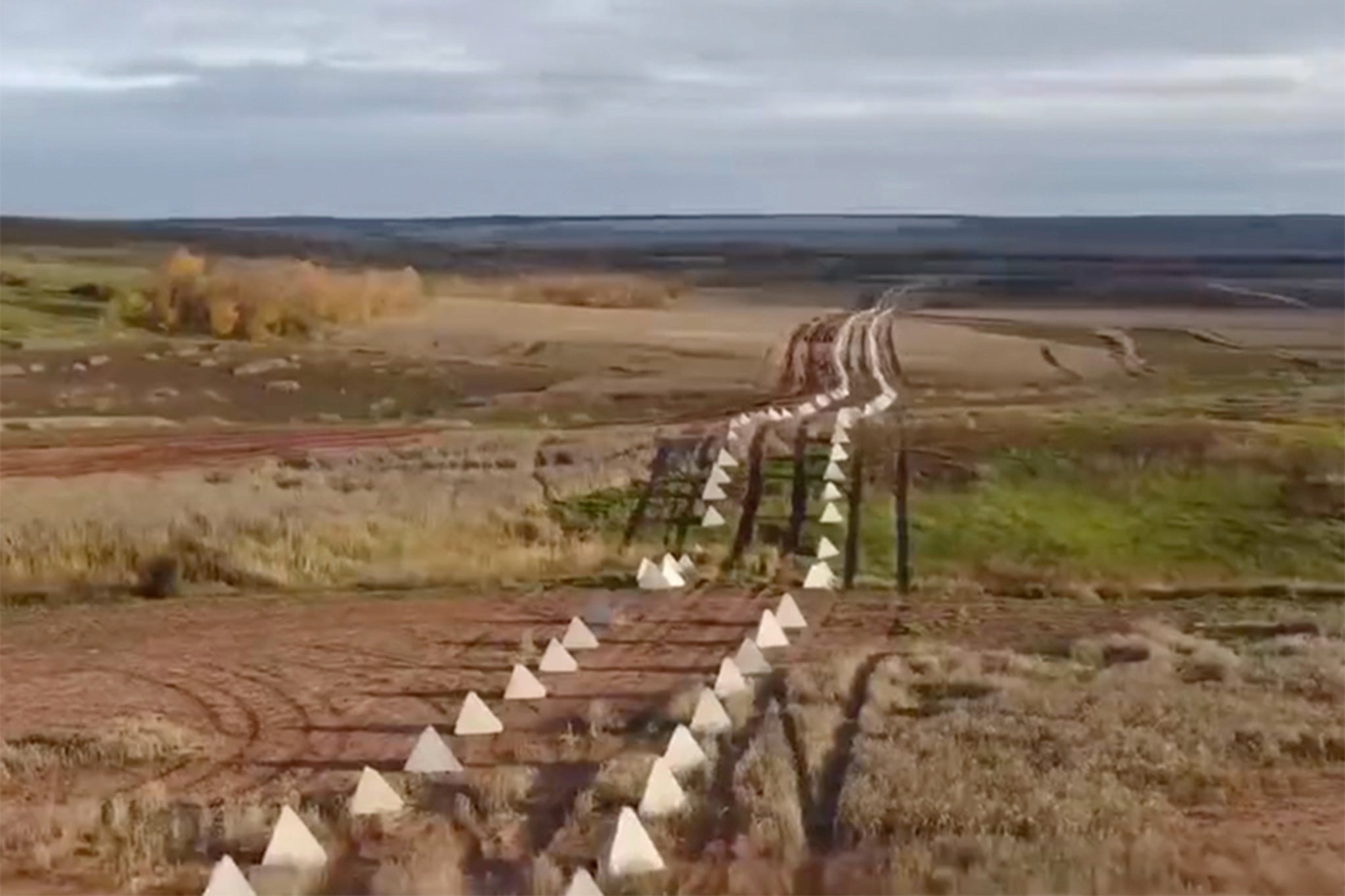
He said that Ukrainian forces had made headway against small parts of the second and even third line of Russia’s defence in the Zaporizhzhia region, but not sufficiently far enough to yet disrupt the vital route, along the Azov Sea, supplying Russia’s forces in a territory they have held since the Kremlin launched its full-blown invasion in February last year and areas in Ukraine’s eastern Donbas area and Crimea, which they have occupied since 2014.
The second Russian defence lines and a third behind those are believed to be weaker than the first and Kyiv believes the rear defensive lines are manned by troops including reserves, which are largely inexperienced and lack training.
Ukraine believes that Russia has already flung its most powerful troops onto the battlefields, with its intelligence indicating Moscow has already committed its, reputedly, two best airborne divisions, the 7th and 76th, into fighting in Zaporizhzhia and elsewhere along the front. But, Ukraine says, these troops described as “elite” by Moscow have been unable to change the contours of Ukrainian advances.
Ukraine and Russia are engaged in large-scale battles further north, around Bakhmut, the site of the longest and fiercest battle in Europe since the Second World War, and in the country’s northeast Kharkiv region, where the Russians have poured in forces in an effort to advance on Ukrainian positions in towns such as Lyman and Kupyansk.
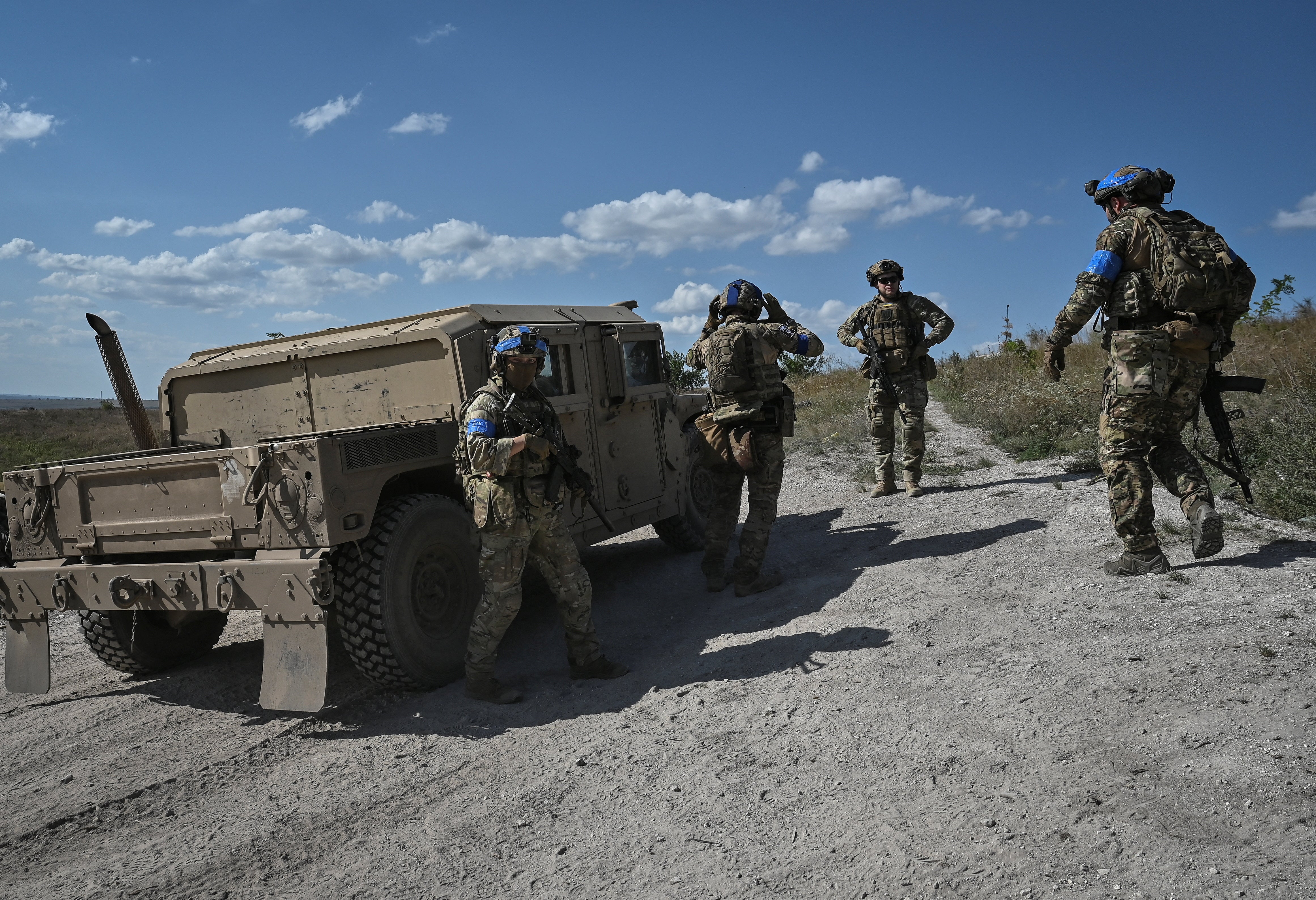
The general staff officer said that even if Ukrainian troops do not reach the Azov shore, they could soon penetrate far enough for their artillery to gain “fire control” – get within range – to shell the road and a vital railway network.
However, many Ukrainian and Western experts warn that the conflict will almost certainly continue well into next year. A serving major with knowledge of the Zaporizhzhia area said that although Kyiv often mentions the “Melitopol and Berdyansk directions”, Russian-occupied ports on the Azov Sea, as key goals of the offensive, the Ukrainian military command does not telegraph its intentions to the enemy. “I think you should keep an eye on Crimea,” he said.
Last autumn Ukrainian forces pulled off some dramatic surprise attacks which forced Russian forces to flee from large swathes of occupied territory in Kharkiv and retreat from the city of Kherson, the only Ukrainian regional capital they had managed to capture and which the Russian president Vladimir Putin had, just a short while previously, declared would forever be Russian land.
Some believe a Ukrainian attempt to eject Russia from Crimea is now being seriously considered, following recent spectacular attacks against Russian targets in the annexed peninsula.
Those included the destruction of two of Russia’s most expensive and powerful air defence systems, the S-400, which left the peninsula vulnerable to other strikes, including a rocket attack that destroyed Russia’s Black Sea Fleet naval headquarters in Sevastopol last week.
Ukraine claimed that the attack killed the admiral commanding the navy on the peninsular and dozens of other high-ranking Russian officers. However, Kyiv has since said it is “clarifying” its information after Moscow released videos showing admiral Viktor Sokolov at a conference on Tuesday. It is not yet clear when the footage was filmed.

Regardless of whether Sokolov died in the attack, the grand colonnaded HQ was a precious and iconic symbol for the Kremlin and its destruction was yet another painful blow to Russian morale.
Vladislav Seleznyov, a retired Ukrainian army colonel, who worked on Ukraine’s general staff and is a widely-respected military analyst, believes that the cluster of recent operations that have targeted Crimea could be preparations to seize back control of the peninsula. He predicts that October will see some very “dynamic” moves by the Ukrainian military there.
Seleznyov said that the northwestern part of the Black Sea is now under Ukraine’s control to the extent that Russian vessels do not operate there because they fear the sort of missile attacks that have sunk or damaged many of their ships. He said they are confined to inlets in Crimea or have moved closer to the north-eastern Black Sea coast. British intelligence supports that assessment.
He described the devastating Ukrainian strikes against Crimean targets during the last three weeks as the “culmination” of a process planned by various branches of Kyiv’s armed forces including the navy, air force and marines.
Also involved were Ukraine’s military and civilian intelligence services working with special forces and partisans based on the peninsula. These gathered the information that enabled the precise and devastating timing of the attack on the Russian naval HQ.
Seleznyov believes the recent focus on the peninsula could be a prelude to wresting Crimea from Russian control. “It’s evident that in this way the Ukrainian military is preparing the ground for future battles.” He predicted that there would be an increase in Ukrainian strikes against bridges linking the peninsula to mainland areas.
Earlier this summer retired general Ben Hodges, who commanded the US army in Europe and has been a close observer of the Ukraine war, said that Kyiv could take Crimea before the end of this year if the US provided long-range weapons. He also said that Ukraine needed American-supplied F-16 fighters to provide cover and the range of firepower needed to defeat Russia on the peninsula.
Joe Biden earlier this month promised to supply such a weapon, the US-made Army Tactical Missile Systems (ATACMS), which has a range of 190 miles. British and French-supplied long-range “Storm Shadow” missiles have boosted Ukraine’s capacity to strike the enemy deeper and were used by Ukrainian fighters to hit the Sevastopol naval HQ.
Ukrainian pilots have begun lengthy training on the sophisticated F-16s, which were pledged by the US and other Nato countries and are a match or have superior capabilities to Russia’s newest warplanes. The F-16s can also launch a wide array of missiles suitable for fights in the air, hitting battlefields or striking far behind enemy lines.
The lion’s share of the modern tanks, other armoured vehicles and cutting-edge artillery systems supplied to the Ukrainians have not been committed yet to the offensive as well as thousands of troops trained by Western instructors in Europe, including thousands in Britain.
The Ukrainian major who spoke to The Independent on the condition of anonymity said that with the promised new weapons “we could soon see very interesting developments in Crimea” leading to a defeat for Putin that could herald an end of the war.
But Russian forces, even deprived of most of their supply routes, would be unlikely to swiftly surrender Crimea and he believes the fighting would see heavy casualties for both sides.
“When you see the Kerch Bridge, which we have proved is already within our reach, being totally disabled, that will be the start of the battle to retake Crimea,” he said.
It will soon be a year since Ukraine’s first attack against the Kerch Bridge on 7 October 2022, which disrupted traffic for weeks.
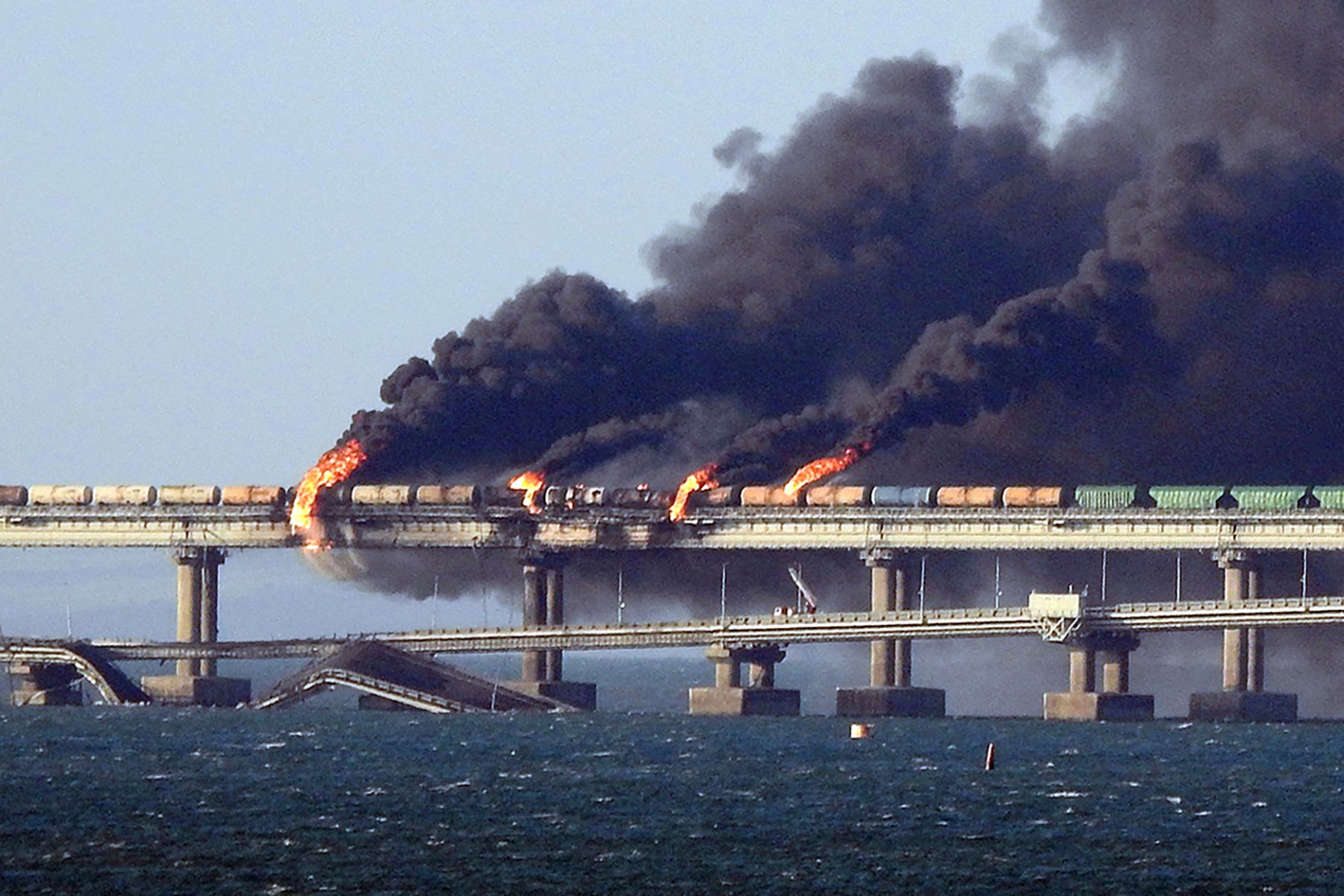
General Kyrylo Budanov, Ukraine’s military intelligence chief, who is credited with involvement in that attack and many other daring operations in Crimea, warned while accompanying Ukrainian president Volodymyr Zelensky on a visit to the US earlier this month that Putin may soon be upset by more bad news about the Kerch Bridge.
He said: “The question regarding the Kerch Bridge is not whether we will strike or not, it’s only a matter of time.”






Join our commenting forum
Join thought-provoking conversations, follow other Independent readers and see their replies
Comments